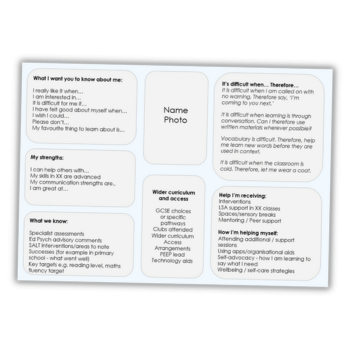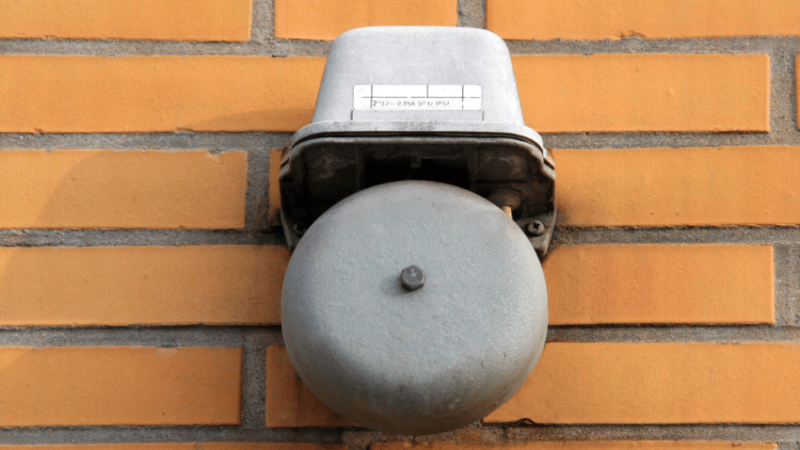Silence in the classroom – Why quiet lessons aren’t always the answer

A key challenge of the exam room is its silence – but take care when showing students what it will feel like, cautions Matt MacGuire…

Children need silence. They need silence to think.
They need to be able to sub-vocalise before they put words on the page or share them in a discussion. They need their peers to be silent so they can hear and focus on the voice of the teacher – the voice of the expert in the room.
Children need silent classrooms because they replicate the conditions of the exam hall they’ll ultimately have to face. I would argue, however, there are in fact two kinds of silence typically deployed in educational settings – and they’re not created equal.
Oppressive silence
Oppressive silence is created through fear. It’s the silence of a tyrannical teacher. This teacher can certainly create silence in the classroom, but it’s a begrudging, enforced silence. The right conditions have been achieved for focused work, but in the wrong way.
When the silence you have is there purely as a result of a strongly enforced behaviour policy, you have a physical environment that’s advantageous for learning, but with something important missing – because forcing children to be silent doesn’t force them to think.
In any case, you don’t want to be ‘forcing’ students to do anything. If they don’t want to think hard about your subject during that silent time, then they won’t. If they’re agreeable and able, they’ll churn out work that’s good enough. If not, they’ll refuse to work.
Resentment and frustration
Worst of all, there’ll be some who simply cannot access the work. In a forcibly silent classroom, these students will be left to just sit there and confront their own inadequacy before ultimately deciding it’s better not to try, because that will hurt less.
Oppressive silence is the kind of silence that’s suddenly imposed without warning or explanation. It’s the silence that ensues when students don’t understand why it’s in their best interests to be silent.
It’s also the kind of silence that students won’t have been properly prepared for, thus preventing them from making the best of the opportunities it might afford them. Oppressive silence is wasteful, while promoting resentment and frustration.
Of course, there will also be a few bright and independent minds who revel in silence, but your job is to ensure that everyone is learning, not just some. Up to a point, the academic top end can get along without your intervention (despite the rhetoric from some quarters around high ability being a different kind of ‘learning need’). The rest of the room, however, won’t be able to make the best use of silent time unless they’ve been shown how to.
Productive silence
Conversely, productive silence is magical, and among the very best things that can happen in a classroom. Productive silence is essentially the endpoint of a good learning cycle, when students are able to independently and confidently put their learning into practice.
In this scenario, the students will have been taught properly and supported as necessary, and their judicious teacher will have recognised that they’re now ready to apply their newly acquired knowledge and skills under exam-style conditions.
This period of ‘golden silence’ might last just 10 minutes, or it may extend to the duration of an entire lesson. Either way, it’s a time during which the teacher won’t be talking because the students are drawing on their internal intellectual resources.
The students will need to listen to their own internal voices to test what they know – but crucially, they’re doing so willingly because they know their teacher has given them the mental resources they require.
They’ve previously watched the teacher apply the knowledge in question through live modelling, and have been supported through this application process through joint modelling. The next logical step is to attempt applying that knowledge independently, which is why the students don’t feel resentful or abandoned when the teacher says, ‘Over to you.’
At my school, this process of teacher modelling, co-modelling and student application is called ‘I do; we do; you do’. It’s simple and it’s brilliant.
‘Tough love’
And thus, the magic happens. Every student in the class, expertly prepared, picks up his or her pen and begins to answer their practice exam questions calmly and confidently. Pens dance effortlessly across the page, the fruits of your tireless efforts manifesting before them in beautiful prose. The fledgling birds take flight.
Except that’s not really what happens.
In reality, whilst most students move confidently into independent practice, one student just sits there, staring at the page. Pen remains on the desk. Posture says ‘defeated’. What do you do?
This is silent time. Golden time. You’re testing these students, so surely you need to let this process run its course, no? Even if this one student can’t write a thing, he or she needs to know that they’re falling behind. They’ll ultimately learn from it, and duly try harder in class thereafter. It’s tough love.
It’s also utter nonsense.
Active and attentive
There’s no wisdom to be had in leaving a student to fail. Even if the rest if the class have got it, even if this student contributed to their own failure through some combination of inattention and poor behaviour.
Five minutes is enough time for the student to realise they can’t do it and need help, so don’t force them to remain in this negative mental space while they watch their peers succeed. You must intervene.
Quietly, discreetly, you should move to support this student. You could perhaps write a sentence starter, provide them with a list of key words, remind them of a specific equation or the steps of a process that will help them.
Make a mental note that this student isn’t in line with the rest of the class, but then provide support that will allow them to work productively during the silent period. If you don’t do this, you’re allowing your student to practise failure, and that’s a deadly mistake.
Productive silence is golden and wonderful then, but that doesn’t mean you can put your feet up whilst the class works away. It’s a time for you to be active and attentive. Circulate the room. If everything’s going well, smile and show that you value the students’ hard work, and that you’re pleased with their success.
If a student needs help, allow them to struggle for a moment (since they may need this productive struggle) but intervene before they become demoralised. Get them back on track with a bespoke and responsive intervention – because if you don’t, that productive silence may soon turn into an oppressive silence for at least one of your students…
Matt MacGuire is an assistant headteacher; this article is based on a post originally published at his blog, Ten Rules for Teaching (tenrulesforteaching.com)








